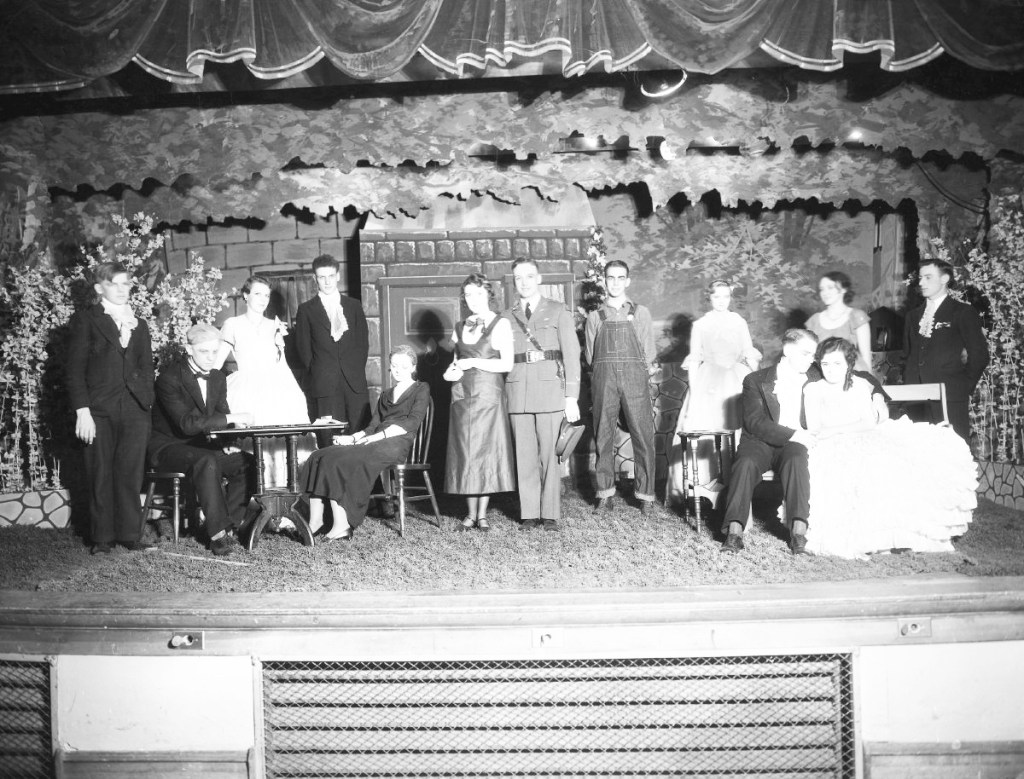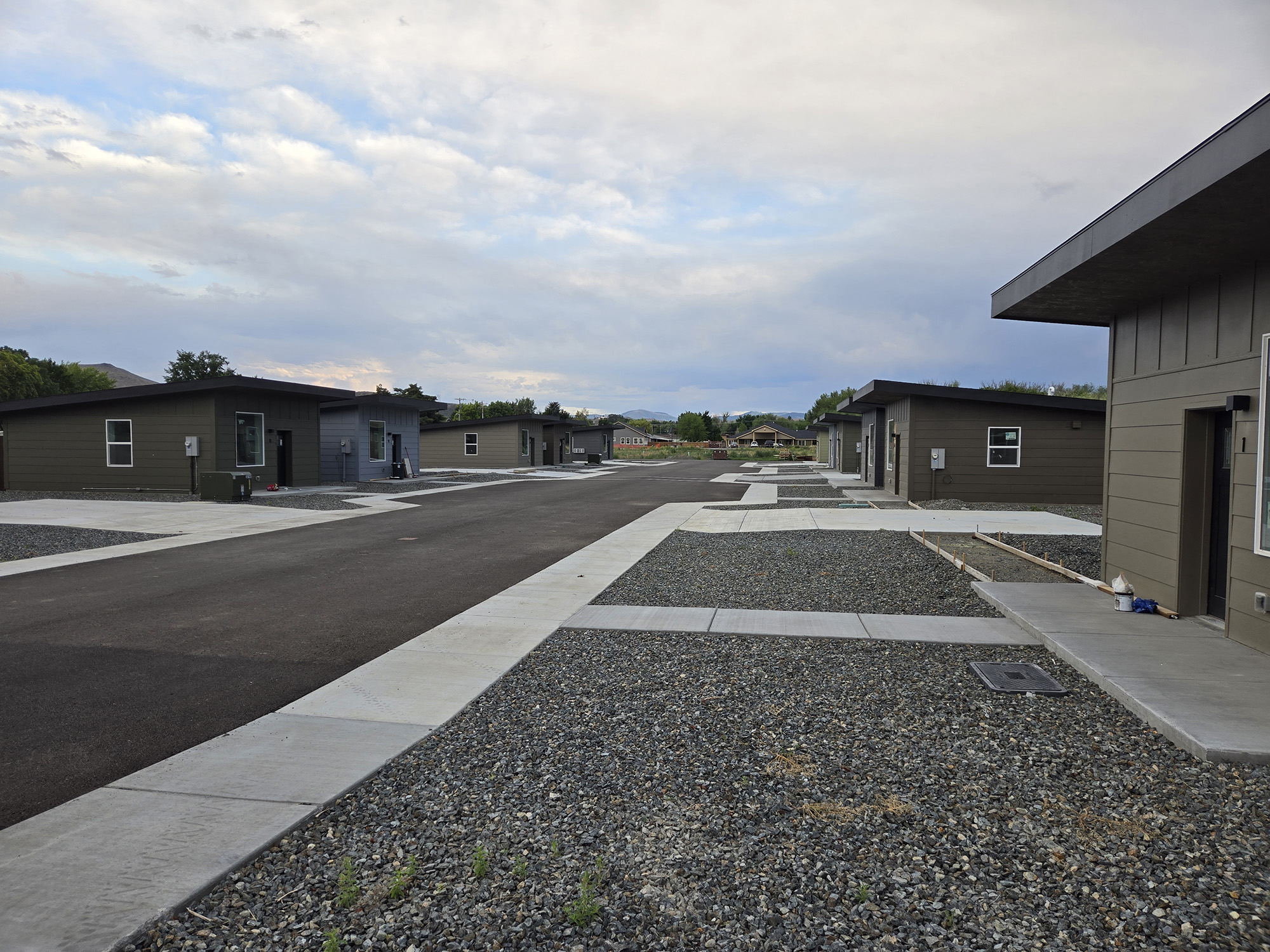School district officials expect Central Building will be torn down
Published 8:07 am Thursday, May 30, 2024

- Baker High School students perform a play in the auditorium at the Central Building around 1942.
Betty Palmer and Doug Dalton both recognize the significance of the stone building.
Trending
And both wish the 108-year-old, three-story structure, which served as Baker High School from 1917-52 and is known as the Central Building, could be saved.
“We know this is a building that has historical significance and there’s also great sentimentality attached to the building,” said Palmer, interim superintendent of the Baker School District. “It’s a great building. You can see why people are emotional. It had a lot of charm to it.”
But in the aftermath of a May 22 fire that destroyed the building’s roof and caused floors to collapse, neither Palmer nor Dalton believes the structure can remain standing on the 1.5-acre block between Washington and Court avenues, and Fifth and Sixth streets, just southwest of Baker Middle School.
Trending
“Based on everything I’ve heard, I believe it’s going to have to come down, and fairly quickly,” Palmer said on May 28.
Dalton, president of Baker Technical Institute, the nonprofit that started as a school district program and has been overseeing a project to remove asbestos from the Central Building, agreed with Palmer.
“Everything I’m hearing is leading in that direction,” Dalton said on May 29.
Casey Kump, deputy state fire marshal who, along with lead investigators from Oregon State Police is trying to determine what started the blaze, also believes the damage is so severe that the structure, which the school district closed in 2009, will be torn down.
Kump didn’t have any update on the investigation as of Thursday, May 30.
There is no timeline for demolishing the building.
Both Palmer and Dalton said school district and BTI officials have been meeting with engineers to come up with a plan.
“We’re moving as quickly as we can,” Dalton said.
There is considerable urgency, Palmer said.
Kump said flames damaged the building’s steel frame and wood trusses.
He believes the structure is at risk of collapsing.
Dalton said firefighters reported seeing the exterior walls, made of tuffstone quarried near Pleasant Valley southeast of Baker City, “heaving” during the blaze.
“There’s a pretty significant concern as to the integrity of the exterior walls,” Dalton said.
That’s why a temporary cyclone fence surrounds the Central Building.
Palmer said the fence was placed at a distance that engineers determined based on how far debris could pose a risk to people were the building to collapse.
The Helen M. Stack building, where seventh and eighth graders have classes, is outside that perimeter.
The school was closed May 22 and 23 due to smoke, but students returned on May 28 and have attended classes as usual.
Dalton said dealing with the Central Building is a priority not only due to public safety concerns, but also to minimize the disturbance to people who live nearby.
Dawn Kitzmiller, Baker City building official, mentioned that issue in a letter she sent to BTI and the school district on May 28.
Kitzmiller expressed her condolences for the fire, writing that she is “terribly sorry for your loss.”
She wrote in the letter that “we consider the structure to be severely damaged and unsafe to navigate both internally, and externally.”
Kitzmiller asked that district officials work quickly to come up with a plan for the building so the streets nearby can be reopened to traffic.
Kitzmiller said that if the district could hire a contractor to take down at least the upper parts of the exterior walls, that would shrink the area where debris could spread if the building collapses, and allow the city to reopen the streets.
Asbestos and insurance
The school district transferred the Central Building to BTI so BTI, through the federal Brownfields program, could apply for grants to remove asbestos from the structure, Palmer said.
A contractor replaced the roof, which contained asbestos, starting last fall and continuing into this spring.
But asbestos remained, including in flooring, inside, Dalton said.
No work was going on when the fire started early in the morning of May 22.
Dalton said BTI was preparing to solicit bids for removing asbestos from inside the Central Building.
The building is insured, Palmer said.
It’s not clear whether insurance will pay the entire cost to demolish the building and haul away the debris, she said.
“If we can break even we’ll be lucky,” she said.
Palmer said she hopes BTI will be able to use its remaining Brownfield grant money.
Because the structure is unstable, it’s not safe for workers to go inside, Dalton said.
The fire, and the likelihood that the building will be demolished, complicates the asbestos issue, he said.
Were the building still intact, a contractor could identify the items that contain asbestos and deal with them separately.
But now, with what’s likely to be a pile of jumbled debris, Dalton said workers might have to assume that most of the debris could contain asbestos, and deal with it accordingly.
On one hand, the timing is fortuitous because this is the final week of school, Palmer said.
That means demolition and removal work can happen without having to potentially accommodate the BMS schedule.
On the other hand, though, summer could be a challenging time to find available contractors licensed to deal with asbestos, Dalton said.
Some of those contractors work primarily in older schools, he said, and they tend to be busier during summer because such projects have to be scheduled when students are on vacation.
“We’re trying to move as fast as we can based on contractors’ schedules,” Dalton said.
Salvaging the stone
Palmer said she’s aware that local residents wonder whether, if the Central Building is demolished, some of the tuffstone blocks can be saved and reused.
“That’s the question on everybody’s mind in town,” she said.
The rock actually started as volcanic ash erupted from a vent near Castle Rock in northern Malheur County about 15.8 million years ago, according to geologists.
The vents belched out massive amounts of ash that spread across Northeastern Oregon and into Idaho.
The superheated ash consolidated rapidly into stone, a process known as “welding,” as it cooled.
Some parts of Smith Rock State Park are made of similar welded tuffs.
Tuffstone from the Pleasant Valley area was used in several other historic buildings in Baker City, including City Hall, the County Courthouse and St. Francis de Sales Cathedral, all built in the first decade of the 20th century.
Palmer said she hopes that some of the blocks can be saved.
Dismantling the Central Building “piece by piece” is not feasible both due to the expense and the amount of time that would take, she said.
“But we will try to save as much as we can,” Palmer said.
“We know this is a building that has historical significance and there’s also great sentimentality attached to the building. It’s a great building. You can see why people are emotional. It had a lot of charm to it.”
— Betty Palmer, interim superintendent, Baker School District









